Brookhaven-Montauk-Shoreham. (TWA flight 800: Introduction and Overview)A portrait in deception
by Steven J. Smith
by Steven J. Smith
1.1
Introduction:
What does the Brookhaven national laboratory, Montauk Point state park, the decommissioned Shoreham nuclear power plant, and the mid-air explosion of TWA flight 800 have in common? The primary purpose of this paper is to delineate the connection between these seemingly unrelated locations and events. The paper also serves as a practical example of the American covert underground infrastructure, the methods employed by it's architects, and the goals of it's workforce.
Due to the scope of this paper, I have chosen to divide the material into six separate interlinked sections. Each section covers one particular aspect and/or subject of the analysis, and where appropriate, is linked to other relevant sections.
1.2
Overview:
While the Montauk site is at this point, well documented by many different authors, most fail to fully appreciate it's interrelationship to the other locations covered in this paper. The central player is the Brookhaven national laboratory. As we shall see, the other locations and events exist in relationship to the capabilities and geographic location of this laboratory. I have included an aerial photo of eastern Long Island to show the geographic relationships. The photo has embedded links to the relevant locations and events.
----------------------------------------------------------------
|
Shoreham Nuclear Facility Analysis
by Steven J. Smith
4.1 Aerial Photo Analysis:
The photo on the right is an aerial view of the Shoreham nuclear power generation facility, owned by Long Island Power Authority (LIPA). According to LIPA, this facility was decommissioned in June,1987 and the nuclear fuel removed. This photo was taken in August 1994. Note the parking lot full of cars, in the upper right hand corner of photo. Also note the cars parked along left hand edges of buildings in lower left corner of photo.
Another unusual feature is the secluded complex of buildings in the upper middle of the photo. Notice how a strip of forest was left between the complex and the beach for concealment. Also, notice the concealed low traffic road connecting this complex to the road in center of the photo. One other interesting feature is the trail leading from the beach, to the right hand edge of the complex. When taken all together, this complex has the classic signature of a rural underground access point (see companion paper entitled "Underground Infrastructure").
This facility is fully operational, and being used to supply electrical power to the covert particle beam weapon system at Brookhaven national laboratory.
Note: at the time of it's decommissioning Gov. Mario Cuomo, coerced New York's public-utilities commission into the following agreement with LIPA: The power authority could pass the cost of Shoreham along to its customers only if it agreed not to operate the plant. Another example of how the cost of American underground infrastructure is covertly shifted to an unsuspecting citizenry.
Brookhaven-Montauk-Shoreham Aerial Photo
2.1
Aerial Photo Analysis:
The photo below is a composite image, created from USGS (united states geological survey) aerial maps, showing the eastern end of Long Island, New York. This photo illustrates the geographic relationships between the various facility locations and events. The red squares are embedded links to the individual analysis pages.
Brookhaven Analysis
3.1
Aerial Photo Analysis:
The photo on the right is an aerial view of the Brookhaven National Laboratory (BNL). One of ten national laboratories overseen and primarily funded by the Office of Science of the U.S. Department of Energy (DOE). The large circular area in the upper middle of the photo is the 2.4 mile radius RHIC (relativistic heavy ion collider). At the time of this photo (august 1994), the RHIC was still under construction. Below and slightly to the left, a second smaller ring called the AGS (alternating gradient synchrotron) is also visible. These devices are collectively known as particle accelerators. The RHIC uses super conducting magnets cooled by liquid helium, and requires 5 million watts of electrical energy just for refrigeration. While no figures are available for total RHIC power requirements, a value in the range of 20 to 40 times the refrigeration load is a safe assumption. This would equal 100 million to 200 million watts of electrical power. Now we see the true purpose of the Shoreham nuclear power facility.
Shoreham Nuclear Facility Analysis
Although the actual particle accelerators are buried in underground tunnels, many of the support structures are above ground. Notice that most administrative, and research facilities are laid out in a grid pattern, but some structures are oriented odd angles. In particular, the purple line connecting the left hand edge of the RHIC ring and the right hand edge of the AGS ring, terminates at a group of structures in the lower middle of the photo.
In the color photo to the right, these structures are located in the lower right hand corner, and appear to be a row of metal sheds, with the first one set at a slightly different angle, as if they just happen to follow the road. In reality, their location and orientation is no mere accident of convenience. These building house the support equipment for a first generation particle beam weapon system. It is also no accident that a line drawn from bottom end of this row of structures intersects the crash site of TWA flight 800.
The RHIC and AGS rings are used to accelerate packets of subatomic particles to velocities near the speed of light. These packets are then shaped, focused, and launched at the target by equipment located under the row of metal sheds.
The color image on the right shows a close-up view of another installation located along this same particle beam alignment, known as the NSLS (national synchrotron light source) also visible in the previous photo. This facility uses an electron (ring) accelerator to produce high power ultraviolet laser light. The laser beam serves two purposes. At low power, it's used for target acquisition and tracking. However it's primary (high power) function is to create a partial vacuum "tunnel" through the atmosphere to the target. This allows the particle beam to travel without attenuation or scattering by air molecules.
The facilities listed in this analysis are examples of the "dual use" doctrine. In other words, these facilities comprise an advanced particle beam weapon system, disguised as legitimate scientific research laboratories. The majority of scientists and technicians working at this site have no idea their efforts are being used to conceal such a sinister purpose. To hide this monstrous device behind a facade of innocent scientific pursuit, is typical of the people and organizations that have created the covert underground infrastructure in America.
3.2.1
Particle beam overview:
| |
The following are direct quotes from a public relations document called "RHIC by the Numbers", published by the Brookhaven National Laboratory (BNL).
Quote 1: RHIC's beam travels at 99.995 percent the speed of light (186,000 miles per second, or more than 300,000,000 meters per second). Quote 2: RHIC's beam is not continuous - it's made up of 57 separate "bunches," each containing billions of ions. Quote 3: RHIC ions are so small that, even at nearly the speed of light, the force of their impact is about the same as the impact of two mosquitos colliding. From the BNL website, we discover that gold (Au) atoms are used for the particle beam. | |
RHIC Tunnel. Photo Courtesy of BNL
3.2.2
Particle beam energy calculations:
The energy contained in any moving object, be it a car, snow ball, or particle beam composed of gold atoms is calculated as follows:
[Eq. 1]
| [------] |
The mass of a gold atom is 3.2697-21 grams, and the mass of 2 billion gold atoms is 6.5394-12 grams or 6.5394-15 kilograms. Thanks to Einstein's relativity, the effective mass of any object traveling near the speed of light increases by:
[Eq. 2] [------]
|
At 99.995% of light speed, the effective mass is slightly more than 100 times the rest mass, therefore our 2 billion gold atoms have an effective mass of 6.5394-13 kilograms. Next, the speed of light is 299,792,458 meters per second in a vacuum, and 99.995% of light speed is 299,777,468 meters per second. Therefore:
E = 6.5394-13 * 299,777,4862 * 0.5 = 29383.7 Joules
And since the RHIC stores 57 "bunches" or packets of particles, the total energy is: 57 * 29383.7 = 1,674,871 Joules. This is nearly 3 times the energy of a 3500 pound automobile crashing into a wall at 60 miles per hour! And all of this energy concentrated into 57 packages, each smaller than the period at the end of this sentence, AND traveling at nearly the speed of light.
It seems quote number 3 (above) tells the truth, but NOT the whole truth...
It should be mentioned that according to BNL, the RHIC did not produce a particle beam until July, 1999. However, given the covert nature of DOE, this date is suspect. Furthermore, as the line drawn on the aerial photo of BNL clearly shows, the AGS ring is also capable of supplying particle beams to the weapons system buildings.
E = 6.5394-13 * 299,777,4862 * 0.5 = 29383.7 Joules
And since the RHIC stores 57 "bunches" or packets of particles, the total energy is: 57 * 29383.7 = 1,674,871 Joules. This is nearly 3 times the energy of a 3500 pound automobile crashing into a wall at 60 miles per hour! And all of this energy concentrated into 57 packages, each smaller than the period at the end of this sentence, AND traveling at nearly the speed of light.
It seems quote number 3 (above) tells the truth, but NOT the whole truth...
It should be mentioned that according to BNL, the RHIC did not produce a particle beam until July, 1999. However, given the covert nature of DOE, this date is suspect. Furthermore, as the line drawn on the aerial photo of BNL clearly shows, the AGS ring is also capable of supplying particle beams to the weapons system buildings.
---------------------------------------------------------------
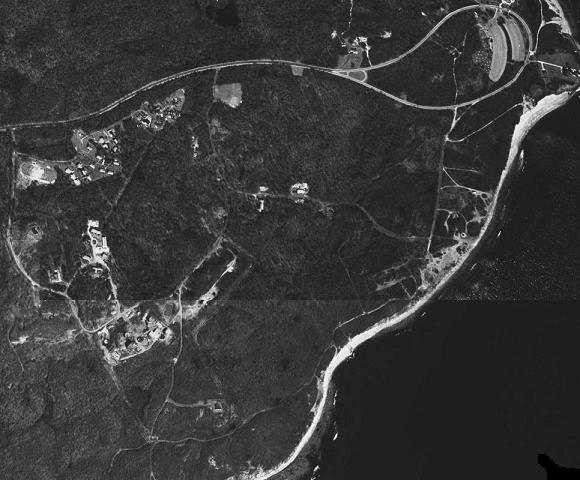
Photo Courtesy of USGS
|
5.1.1
Aerial Photo Analysis:
The photo on the right is an aerial view of Montauk Point state park, and Camp Hero military reservation, both located at the eastern tip of Long Island. The loop highway and large parking lot in the upper right hand corner are adjacent to the Montauk light house (a national monument). The complex of roads and structures stretching from the left hand edge of the photo, and continuing to the right hand edge comprise the Camp Hero military reservation. For many years there has been a continuing controversy surrounding the Camp Hero military reservation (CHMR). According to many accounts, this site has been secretly used for experiments in mind control, advanced weapons research/testing, and as a time machine portal. These clandestine endeavors are commonly and collectively known by the term "Montauk Project".
At first glance, mind control, particle beam weapons, and time travel may seem to have very little in common. However, all three tasks make use of high power electro-magnetic energy. The particle beam accelerators at Brookhaven are used to supply the needed energy (directly in the case of particle beam weapons, and indirectly in the case of mind control, and time travel).
The photo on the right is an enlargement of the bottom center section of the previous photo. Notice the ring shaped artifact measuring approximately 100 yards in diameter. A cross check of the USGS topological survey map indicates the artifact does NOT correspond to any natural land feature. This artifact is the visible surface signature of an underground structure. Manifestations of this kind are caused by two distinctly different processes. (1) Disturbance of the natural aquifer by the underground structure. (2) EM or heat leakage from the underground structure modifying surface vegetation growth.
A 100 yard ring is too small to be a primary particle beam accelerator, however it is just the right size for an electron synchrotron of the type used to create a partial vacuum "tunnel" through the atmosphere to the target (see NSLS, Brookhaven analysis).
Another use for electron synchrotron generated radiation is human behavior modulation (mind control). While the radiation it self is pure EM, the electron synchrotron generation process allows access to parts of the EM spectrum that are not normally available through the use of conventional RF generators. These wavelengths are particularly useful since they are of the same scale (size) as certain microstructures within the human brain. Furthermore, since the wavelengths in question do not occur in the natural environment, the human brain has no innate immunity. The high power levels that can be achieved with an electron synchrotron allow many subjects to be "treated" simultaneously.
The photo on the right is another enlargement from a section of the first photo. Again we see a ring shaped artifact (albeit better hidden). The artifact is more indicative of aquifer disruption than direct vegetation disturbance. This ring is located above, and slightly to the left of the smaller ring shown in the previous photo. Also, once you know where to look, the ring is actually more noticeable in the large photo at the top of the page.
With an approximate diameter of 275 yards, the ring is about the same size as the AGS particle accelerator at Brookhaven. The ring could be a primary particle beam accelerator, but with the Brookhaven facility so close, a better use would be as a secondary storage ring for the primary particle beam accelerator rings at Brookhaven. This conclusion is supported by the fact that accelerators require considerably more power than storage rings, and a plethora of ancillary equipment that would represent needless duplication of the Brookhaven facilities. Locating the particle beam weapon launch facility is more problematical. At Brookhaven the dual use nature of the facilities makes the task relatively easy, however the Montauk underground complex is by definition a covert (secret) base and therefore far less clues are available for analysis.
Assuming the particle beam weapon launch facility isn't completely camouflaged, and assuming the two rings connect to the launch facility via straight beam line, the best choice for the particle beam launch line shown in the photo to the right. The second photo on the extreme right shows an enlarged view of the suspect particle beam launch point. It is interesting to note that ALL of these particle beam weapon components are outside the fenced off portion of CHMR. A classic example of misdirection, and the "hide it in plain sight" doctrine.
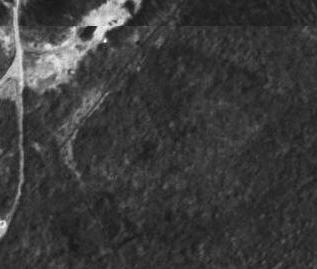 |
| |||
An analysis of the time portal systems is beyond the scope of this document. Suffice it to say that experiments involving time displacement are unbelievably dangerous and therefore an isolated site, located well away from major population centers and valuable infrastructure (such as Brookhaven national laboratory) is advisable. Yet the nature of these experiments also require access to energy concentrations that can only be achieved by particle accelerators (such as Brookhaven). Based on this set of requirements, Montauk point (and CHMR) would seem to be the ideal compromise. However, it is the authors opinion that if an accident does occur, Montauk will prove to be entirely too close for comfort...
| |||
5.1.2
Support Facilities:
| ||||||||||||||||||||||||||||||||||||||||||||||||||||||||||||
An operation of this magnitude requires considerable above ground support facilities. In particular, particle beam components are large and cumbersome, therefore they must be trucked into the site. A line of trucks, waiting to unload their cargo would be a dead give-away, furthermore truck drivers are notorious gossip mongers. Therefore a nearby cargo container staging yard is needed. Located on old Montauk highway, at the junction with the new Montauk highway, the area shown in the photo on the right would make an ideal cargo container staging yard. The large circular structure near the bottom of the photo does not cast much shadow, and is most likely an "in ground" tank.
5.1.3
Summary:
The Montauk (and CHMR) site show most of the classic indicators of an underground access point (see companion paper entitled "Underground Infrastructure"). Furthermore, the identified artifacts (above) are commensurate with the alleged facility uses (5.1.1), both in terms of size and shape, and in terms of geographic relationship to each other. Therefore, it is the authors opinion the Montauk point state park, and CHMR are in fact a covert underground facility, operating under the aegis of the United States government.
| 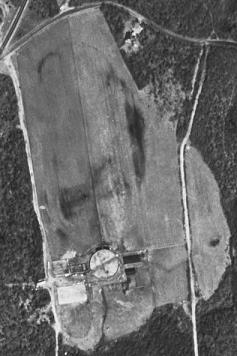
Photo Courtesy of USGS
| |||||||||||||||||||||||||||||||||||||||||||||||||||||||||||
------------------------------------------------------------------------------------------
TWA Flight 800 Analysis
by Steven J. Smith
| ||||||||||||||||||||||||||||||||||||||||||||||||||||||||||||
----------------------------------------------------------








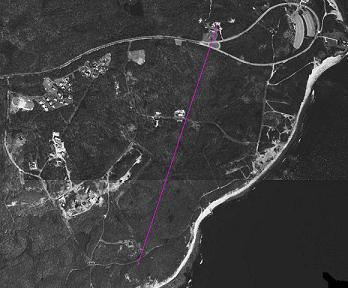
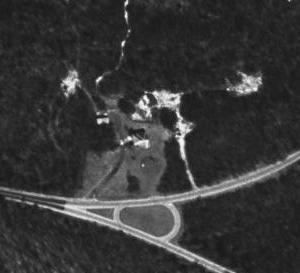
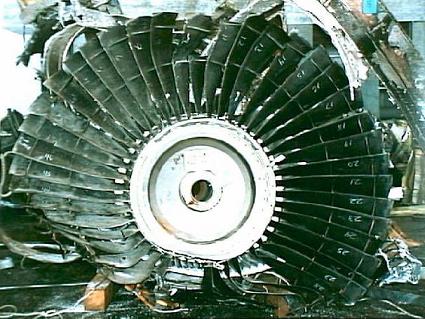
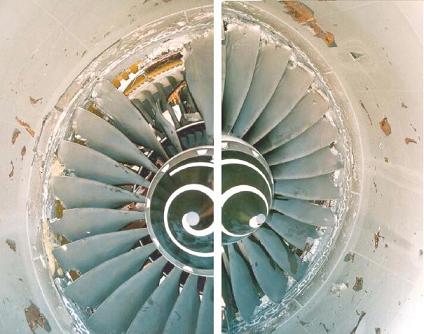
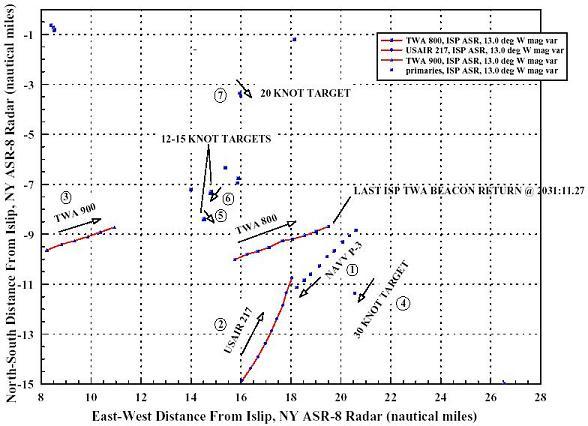
No comments:
Post a Comment